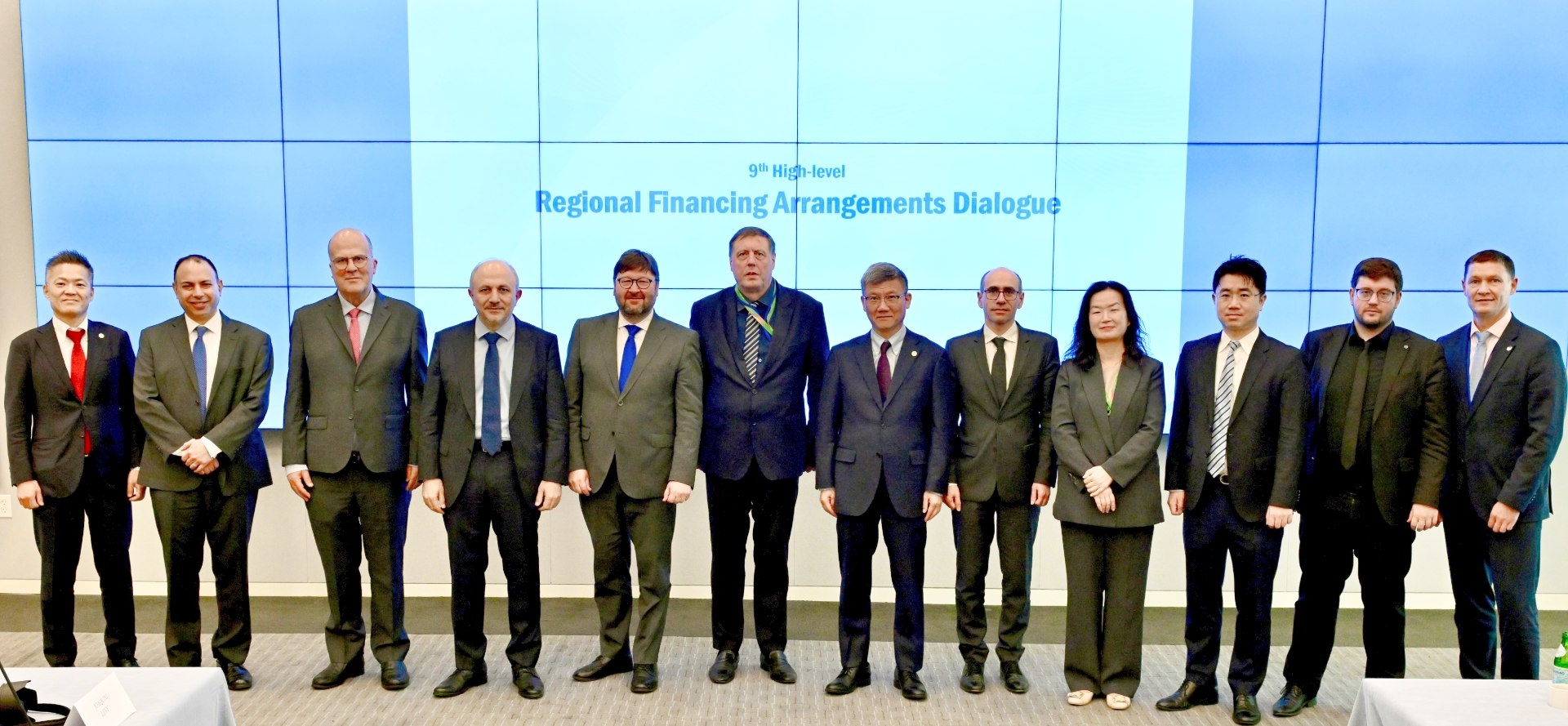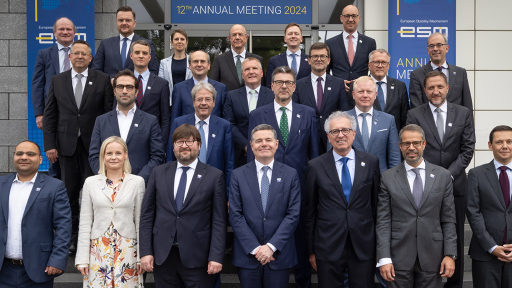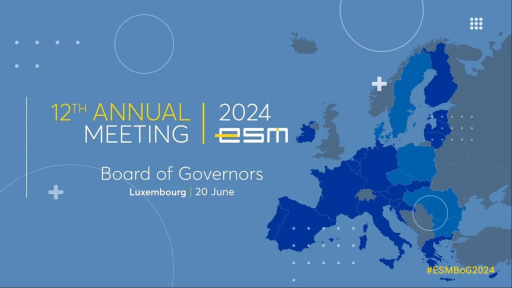Home
Facts
Press conferences
Lending toolkit
used
Ireland

Portugal

Greece

Cyprus
Objective
To assist ESM Members in significant need of financing, and which have lost access to the markets, either because they cannot find lenders or because the financing costs would adversely impact the sustainability of public finances.
Conditionality
ESM loans are conditional upon the implementation of macroeconomic reform programs prepared by the European Commission, in liaison with the European Central Bank and, where appropriate, the International Monetary Fund.
Monitoring
The same institutions are entrusted with monitoring compliance with the agreed program conditions for economic reform. The ESM Member is obliged to cooperate with this monitoring and enable the ESM to perform its financial due diligence. If the country deviates significantly from the program, disbursements may be withheld.
unused
unused
Objective
The ESM may engage in primary market purchases of bonds or other debt securities issued by ESM Members at market prices to allow them to maintain or restore their relationship with the investment community and therefore reduce the risk of a failed auction. This can complement the regular loan instrument or a precautionary programme. The purchase will be limited to 50% of the final issued amount.
conditionality
No additional conditionality beyond the underlying programme.
unused
unused
objective
To support the sound functioning of the government debt markets when lacking market liquidity threatens financial stability in the context of a loan either with a macroeconomic adjustment programme or without if the Member's economic and financial situation is fundamentally sound.
conditionality
For ESM Members not under a programme, specific policy conditions will apply.
unused
unused
objective
To support sound policies and prevent crisis situations from emerging. It aims to help ESM Members whose economic conditions are sound to maintain continuous access to market financing by strengthening the credibility of their macroeconomic performance.
two types of credit lines
Both can be drawn via a loan or a primary market purchase, have an initial availability period of one year and are renewable:
• Precautionary Conditioned Credit Line (PCCL): available to a Member State whose economic and financial situation is fundamentally sound, as determined by respecting six eligibility criteria such as public debt, external position or market access on reasonable terms.
• Enhanced conditions credit line (ECCL): access open to euro area Member States whose economic and financial situation remains sound but that do not comply with the eligibility criteria for PCCL. The ESM Member is obliged to adopt corrective measures addressing such weaknesses and avoiding future problems in respect of access to market financing. The ESM Member has the flexibility to request funds at any time during the availability period.
• Precautionary Conditioned Credit Line (PCCL): available to a Member State whose economic and financial situation is fundamentally sound, as determined by respecting six eligibility criteria such as public debt, external position or market access on reasonable terms.
• Enhanced conditions credit line (ECCL): access open to euro area Member States whose economic and financial situation remains sound but that do not comply with the eligibility criteria for PCCL. The ESM Member is obliged to adopt corrective measures addressing such weaknesses and avoiding future problems in respect of access to market financing. The ESM Member has the flexibility to request funds at any time during the availability period.
monitoring
When an ECCL is granted or a PCCL drawn, the ESM Member is subject to enhanced surveillance by the EC. Surveillance covers the country’s financial condition and its financial system.
used

Spain
objective
To preserve the financial stability of the euro area by addressing those cases where the financial sector is primarily at the root of a crisis, rather than fiscal or structural policies.
eligibility
The beneficiary Member State should demonstrate an inability to:
• Meet capital shortfalls via private sector solutions.
• Recapitalise the institutions without adverse effects for its own financial stability and fiscal sustainability. The institutions should be of systemic relevance or pose a serious threat to the financial stability of the euro area or its Member States. The ESM Member should demonstrate its ability to reimburse the loan.
• Meet capital shortfalls via private sector solutions.
• Recapitalise the institutions without adverse effects for its own financial stability and fiscal sustainability. The institutions should be of systemic relevance or pose a serious threat to the financial stability of the euro area or its Member States. The ESM Member should demonstrate its ability to reimburse the loan.
conditionality
Will apply to financial supervision, corporate governance and domestic law relating to restructuring or resolution.
unused
unused
objective
To help remove a serious risk of contagion from the financial sector to the sovereign by allowing the direct recapitalisation of institutions. The total amount available for this instrument is limited to €60 billion. The instrument is relevant for banks (systemically important credit institutions), financial holding companies, and mixed financial holding companies as defined in relevant EU legislation.
eligibility
Eligible if the following situations apply:
• They are or are likely to be in breach of the relevant capital requirements and are unable to attract sufficient capital from private sector sources to resolve their capital problems.
• Burden-sharing arrangements, such as bail-in (fully applicable in 2016), in the Bank Recovery and Resolution Directive, are insufficient to fully address the capital shortfall.
• They have a systemic relevance or pose a serious threat to the financial stability of the euro area as a whole or the requesting ESM Member.
• The institution is supervised by the ECB.
• The beneficiary Member State should also demonstrate that it cannot provide financial assistance to the institutions without very adverse effects on its own fiscal sustainability, and that therefore the use of the indirect recapitalisation instrument is infeasible.
• They are or are likely to be in breach of the relevant capital requirements and are unable to attract sufficient capital from private sector sources to resolve their capital problems.
• Burden-sharing arrangements, such as bail-in (fully applicable in 2016), in the Bank Recovery and Resolution Directive, are insufficient to fully address the capital shortfall.
• They have a systemic relevance or pose a serious threat to the financial stability of the euro area as a whole or the requesting ESM Member.
• The institution is supervised by the ECB.
• The beneficiary Member State should also demonstrate that it cannot provide financial assistance to the institutions without very adverse effects on its own fiscal sustainability, and that therefore the use of the indirect recapitalisation instrument is infeasible.
conditionality
Will apply, addressing the sources of difficulties in the financial sector and, where appropriate, the general economic situation of the ESM Member. Additional institution-specific conditions will also apply.
Inter-institutional cooperation
In the spotlight
About






























